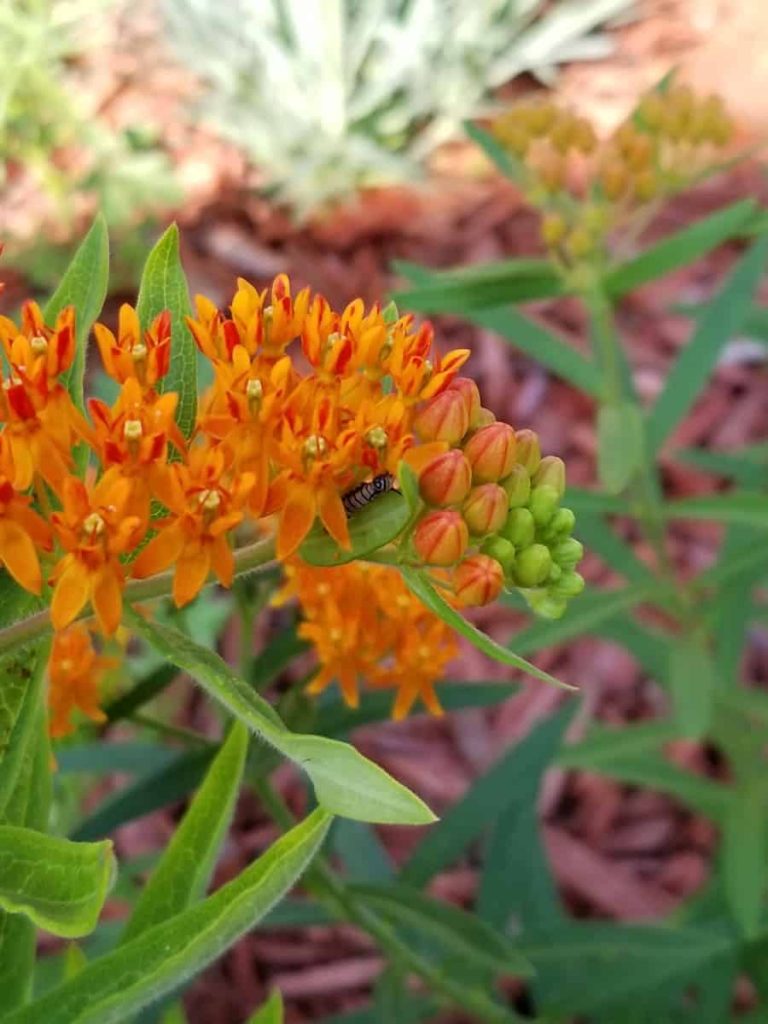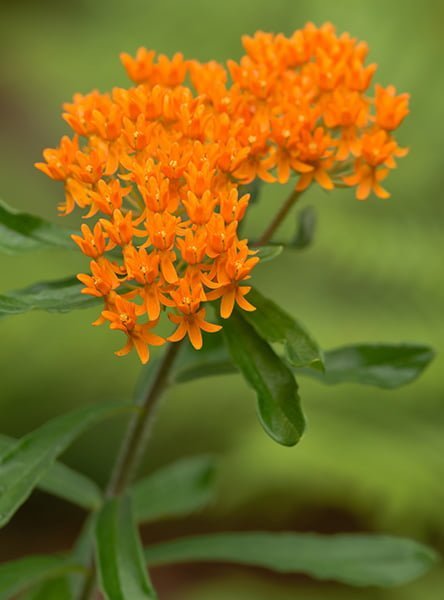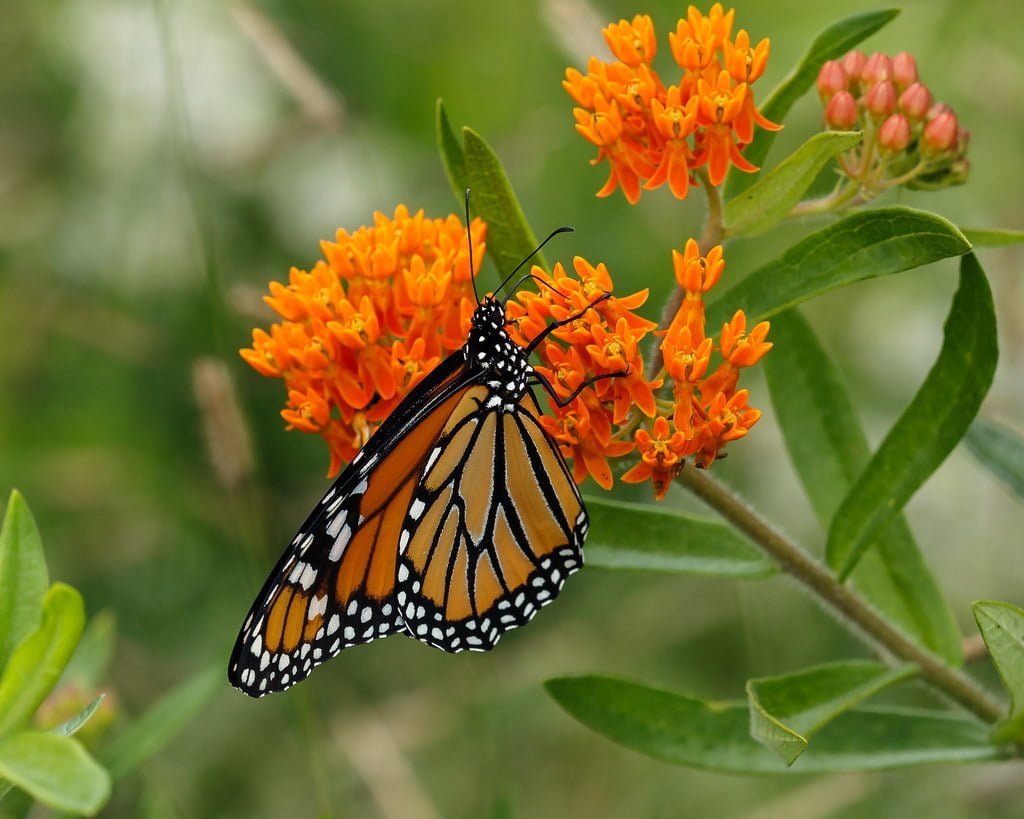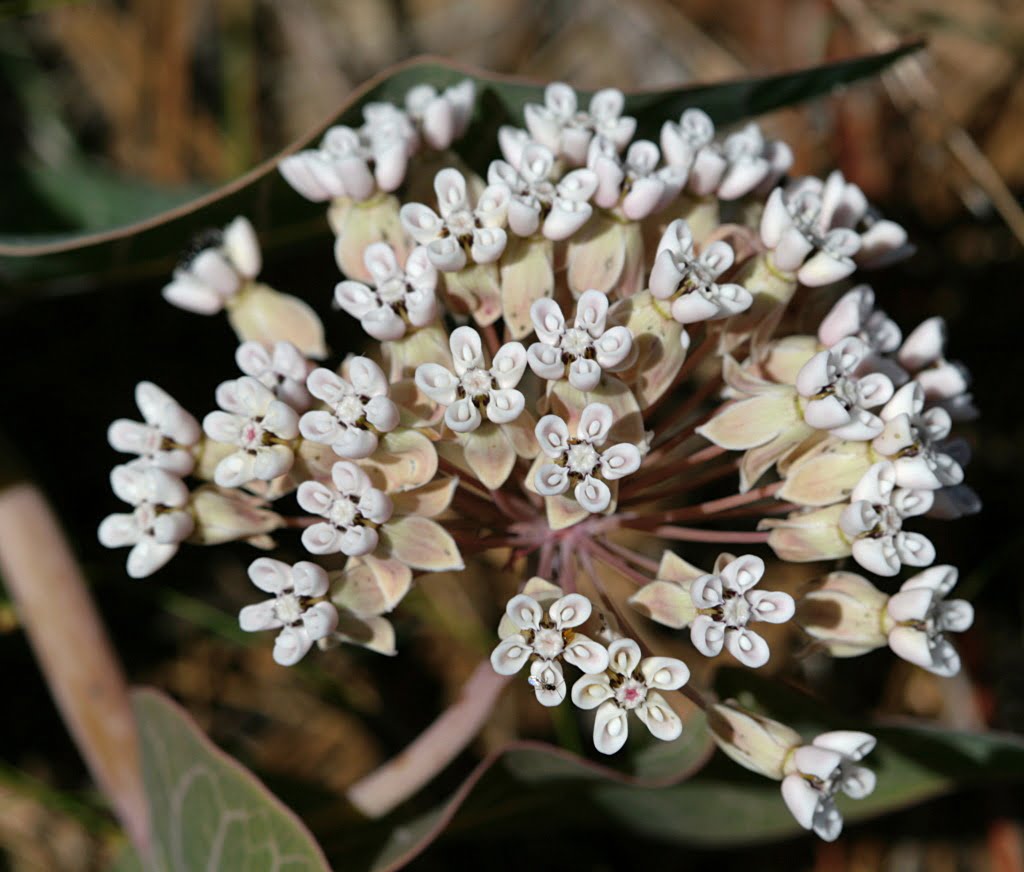Most commonly known as “Butterflyweed,” Asclepias tuberosa might be the most widely distributed milkweed species in North America. It is certainly native to most areas of North America.
Other names include “Orange Butterflyweed,” and “Butterfly Milkweed,” both of which are accurate, in that they are orange, and butterflies love them, along with many other pollinators. In fact, Monarch Butterflies’ brushfeet do not actually germinate Asclepias species. Milkweed depend on bees and ants and other insects to do the dirty work. Adult Monarch Butterflies simply drink the nectar.
When dealing with various Milkweed species, it is also common to simply call this one “Tuberosa.”
A Weed No More
Most names for A. tuberosa contain the word ‘weed.’ Interestingly, Milkweed are almost never a nuisance, and while they can naturalize themselves in new places, they are not usually considered ‘invasive.’
That means using ‘weed’ for any Milkweed is a misnomer. Anyone who is actively growing any native milkweed in their yards or gardens will disagree it is a weed. Milkweed gardens are actually quite difficult to maintain.
Counterfeit Orange Butterflyweed
As with anything valluable, beware of counterfeits!
Keep in mind that most discount seed geeks may sell you “Asclepias tuberosa” but are likely selling you an orange-flowered hybrid of Tropical Milkweed (Asclepias curassavica). You can’t be sure which you have until it flowers.
Unfortunately, Asclepias curassavica are never truly orange; they always have a hint of red or will show some yellow.

Asclepias tuberosa are pure, perfect orange.

County Native
The best way to grow milkweed is from seed. The best milkweed seeds for you are milkweed seeds from your county. Find a local native seed outlet if you can, otherwise, find seed providers targeting species for your state. Beyond that, stick to a region, such as the US southeast, or Pacific northwest.
In consideration of this, Johnny Butterflyseed offers seeds for Asclepias Tuberosa, which has among the widest distribution range of all Milkweed in North America. It is native in a huge percentage of North America from Mexico to Canada. Where it is not native, it can be naturalized without fear of invasion.

Butterfly Milkweed Seeds (Asclepias Tuberosa) for North America
More than 50 Orange Butterfly Milkweed Seeds (Asclepias tuberosa) originating from tobacco country for most of North America.
Free Milkweed!
Universities and other organizations sometimes have programs that provide free milkweed seeds.
You can always gather wild seeds from your local nature preserves, provided they are not endangered, and that you always follow Center for Plant Conservation Best Practices Guidelines. If you can obtain some,
The truth is, there are not enough free milkweed seeds to really support each person who needs to grow milkweed.
The best way to obtain free milkweed is to purchase your own Conservation Land and have a huge patch of Milkweed, then gather seeds for free! Of course, the seeds only appear once a year. And not all at once either; pods are opening and slowly dropping seeds for weeks. Milkweed isn’t a bumper crop, so you have to visit the garden again and again. Most people can’t purchase conservation land directly next door, so there are usually long drives involved in gathering the seeds. Then clean, measure, package in free envelopes, label with free adhesive stickers that print themselves for free, print or hand fill out each address on a free envelope, add free stamp, deliver to post office, and have a beer, also for free. All this for a customer who only wants to spend $1 and will complain that nothing happened after they dumped them in a dried up pot of dirt from a cactus that died last year. Great work, you’ll be lucky to have enough seeds for 1000 seed packs. That $0.63 you cleared after all the various fees you have for operating a business means you can earn a grand total of $630 profit in a year. Oh but that’s taxed too isn’t it. So maybe you can make $520 a year after spending six figures on that conservation land, spending all your spare time gathering, packaging, marketing, selling, and fulfilling seed orders . Congratulations on that $10 per week you earned.
Or you can buy Johnny Butterflyseed’s Asclepias Tuberosa a.k.a. Orange Butterflyweed:

Butterfly Milkweed Seeds (Asclepias Tuberosa) for North America
More than 50 Orange Butterfly Milkweed Seeds (Asclepias tuberosa) originating from tobacco country for most of North America.
Endangered Milkweed
While the most common Milkweed (Asclepias) species are not usually listed as endangered, there are species that are; nearly everyone has native milkweed nearby that are endangered. And we promise they are not sold at the local hardware or grocery store.
Johnny thinks it is good to treat all Milkweed as endangered species, and know that it is best for everyone to …
Plant More Milkweed!

10 Sandhill Milkweed Seeds Ascslepias Humistrata Pinewood Milkweed Florida-Native
With Johnny Butterflyseed’s Sandhill Milkweed seeds, you’re not just planting flowers; you’re cultivating a living mosaic of nature’s marvels. 10+ Florida Native seeds.